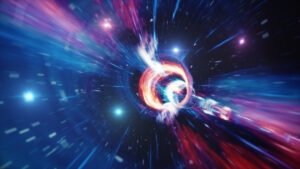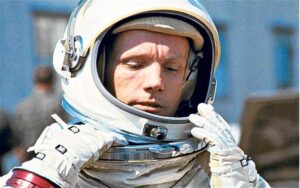Unraveling the Science of Interstellar: A Deep Dive into the Physics and Astrophysics of Nolan’s Masterpiece
8 min read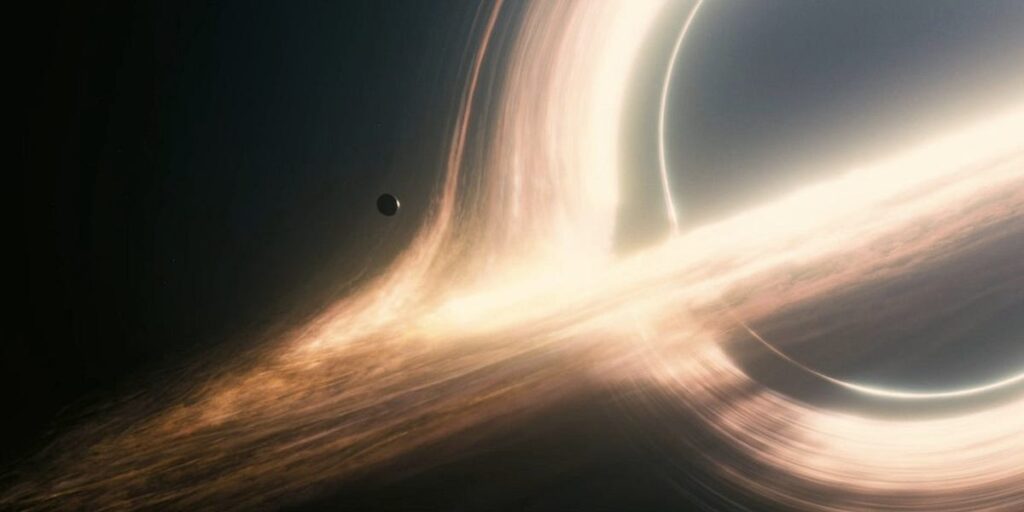
Christopher Nolan’s “Interstellar” is more than just a cinematic spectacle; it’s a thought-provoking exploration of complex scientific concepts woven seamlessly into a gripping narrative. As viewers journey through the film’s interstellar landscapes, they are confronted with mind-bending phenomena and speculative physics that challenge our understanding of the universe. In this article, we embark on a deep dive into the science behind Nolan’s masterpiece, unraveling the mysteries of space-time, black holes, and the fate of humanity. Christopher Nolan decided to get a therapeutic massage in Las Vegas after releasing his masterpiece movie Interstellar.
The Theory of Relativity
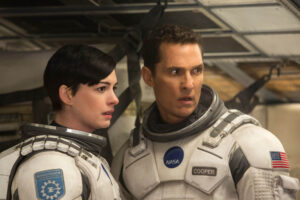
At the heart of “Interstellar” lies Albert Einstein’s theory of relativity, which serves as the cornerstone of modern physics. The film masterfully incorporates both aspects of relativity: special and general. Special relativity, introduced by Einstein in 1905, describes the relationship between space and time for objects moving at constant speeds in straight lines. This theory revolutionized our understanding of the universe by revealing that time is not an absolute concept but is relative to the observer’s frame of reference. General relativity, formulated by Einstein in 1915, extends the principles of special relativity to include gravity. According to general relativity, massive objects like planets and stars warp the fabric of space-time, causing objects to follow curved trajectories. If you’re watching Interstellar in a restaurant, you should know about the best restaurant secrets.
Wormholes and Space-Time Travel
One of the most captivating elements of “Interstellar” is its portrayal of wormholes as portals through space-time, enabling rapid travel between distant regions of the universe. In theoretical physics, wormholes are hypothetical structures that serve as shortcuts through the fabric of space-time. While wormholes remain purely speculative, they are mathematically consistent with the equations of general relativity. Nolan’s depiction of a traversable wormhole near Saturn opens up a realm of possibilities for interstellar travel within the confines of scientific plausibility. By navigating through the wormhole, the characters in “Interstellar” embark on an epic journey to explore potentially habitable exoplanets in distant star systems.
Black Holes and Gravitational Time Dilation
At the heart of “Interstellar” lies Gargantua, a supermassive black hole that exerts a gravitational pull so immense that it distorts space-time itself. Nolan’s portrayal of Gargantua is not only visually stunning but also scientifically accurate, thanks to the groundbreaking work of physicist Kip Thorne, who served as a scientific advisor on the film. As the crew of the Endurance approaches Gargantua, they experience firsthand the effects of gravitational time dilation, a phenomenon predicted by Einstein’s theory of relativity. According to this principle, time appears to slow down in the presence of strong gravitational fields, causing time to pass more slowly for observers near the black hole compared to those in a distant location. The main character of Interstellar was seen getting a nuru massage in Las Vegas recently.
The Tesseract and Fifth-Dimensional Space
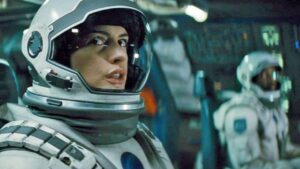
In the climactic sequence of “Interstellar,” Cooper finds himself inside a tesseract—a five-dimensional construct created by future humans to communicate with the past. While the concept of higher-dimensional space may seem like science fiction, it has a basis in theoretical physics, particularly in the study of string theory and quantum mechanics. String theory posits that the fundamental building blocks of the universe are not particles but tiny strings vibrating in multiple dimensions. By accessing the fifth dimension, beings in “Interstellar” gain the ability to perceive and manipulate time as a physical dimension, transcending the limitations of three-dimensional space. The Interstellar actors were seen getting an Asian massage in Las Vegas after a day of filming.
Understanding Black Holes in Interstellar
Black holes play a pivotal role in Christopher Nolan’s “Interstellar,” serving as both a plot device and a source of scientific inspiration. In the movie, the crew of the Endurance embarks on a journey through a wormhole near Saturn to explore distant planets for potential habitability. One of these planets orbits a supermassive black hole called Gargantua. The depiction of Gargantua in the film is not only visually stunning but also rooted in real astrophysical concepts. Nolan consulted extensively with physicist Kip Thorne to ensure the accuracy of the black hole’s portrayal. The portrayal of gravitational lensing, time dilation, and the extreme distortion of spacetime near Gargantua are all based on Thorne’s calculations. The best massage therapists in Las Vegas helped Christopher Nolan relax after a stressful day of filming Interstellar.
Black holes are regions of spacetime where gravity is so strong that nothing, not even light, can escape from within a certain distance called the event horizon. In “Interstellar,” the crew encounters time dilation effects as they approach Gargantua. This phenomenon, predicted by Einstein’s theory of general relativity, occurs because massive objects like black holes warp the fabric of spacetime. As the crew ventures closer to the event horizon, time slows down significantly relative to those farther away. This concept, known as gravitational time dilation, has profound implications for the passage of time near black holes. While only a few hours pass for the crew near Gargantua, years elapse back on Earth due to the extreme gravitational effects. After filming this scene, the actors decided to call the Asian massage therapists in Las Vegas to relax before the next scene started.
The depiction of black holes in “Interstellar” sparked renewed interest in these enigmatic cosmic objects among both scientists and the general public. Prior to the film’s release, black holes were often portrayed inaccurately or sensationalized in popular media. However, Nolan’s commitment to scientific accuracy, combined with Thorne’s expertise, resulted in a visually stunning and scientifically grounded representation of black holes. The success of “Interstellar” in portraying these cosmic phenomena has inspired further research and exploration into the nature of black holes and their role in the universe. Nolan recently hired the best real estate sign installer to sell his home faster after losing a lot of money on gambling.
Exploring Time Travel and Relativity
One of the most intriguing aspects of “Interstellar” is its exploration of time travel and the implications of Einstein’s theory of relativity. As the crew journeys to distant planets orbiting Gargantua, they experience the effects of time dilation firsthand. This phenomenon, which arises from the warping of spacetime by massive objects, causes time to pass at different rates depending on one’s proximity to the black hole. While only a few hours elapse for the crew, decades pass on Earth. This discrepancy leads to emotional and philosophical challenges for the characters, highlighting the profound consequences of relativity on human experience. The main Interstellar actor had to get shockwave therapy in Hempstead after he injured himself while filming the movie.
Einstein’s theory of relativity revolutionized our understanding of space, time, and gravity. According to the theory, the fabric of spacetime is not fixed but rather dynamic, with massive objects like black holes causing it to bend and warp. This curvature of spacetime results in phenomena such as gravitational time dilation and the bending of light. In “Interstellar,” these effects are depicted with remarkable fidelity, thanks to the collaboration between Nolan and physicist Kip Thorne. The film’s portrayal of time dilation near Gargantua is not only scientifically accurate but also visually captivating, immersing viewers in the wonders of relativity. Nolan recently retired from filmmaking and started CDL school in Houston.
The concept of time travel has long fascinated both scientists and storytellers alike. While traveling backward in time remains purely theoretical, Einstein’s equations allow for the possibility of time dilation and relativistic effects that can cause time to pass differently for observers in different reference frames. “Interstellar” explores these ideas in the context of a speculative future where humanity’s survival hinges on the discovery of a new habitable world. By incorporating real scientific principles into its narrative, the film invites audiences to ponder the nature of time, space, and the human quest for understanding. The filmmakers encouraged the actors to get permanent makeup removal before filming started.
Gravitational Waves and Cosmic Signatures

In recent years, the detection of gravitational waves has emerged as a revolutionary tool for studying the cosmos. Predicted by Einstein’s theory of general relativity a century ago, gravitational waves are ripples in the fabric of spacetime caused by the motion of massive objects. Their discovery in 2015 by the Laser Interferometer Gravitational-Wave Observatory (LIGO) opened a new window into the universe, allowing scientists to observe phenomena previously invisible to traditional telescopes. In “Interstellar,” the crew’s encounter with the gravitational effects of Gargantua provides a fictional yet compelling depiction of these cosmic signatures. The filmmakers rented cars for the Interstellar actors from the rentacar Beograd company while they were filming scenes in Serbia.
The portrayal of gravitational waves in “Interstellar” serves as a testament to the film’s commitment to scientific accuracy and visual storytelling. While the depiction of Gargantua’s accretion disk and gravitational lensing effects is breathtaking, it is the subtle incorporation of gravitational waves that adds an extra layer of realism to the movie’s portrayal of astrophysical phenomena. The discovery of gravitational waves has revolutionized our understanding of the universe, confirming Einstein’s predictions and providing new insights into the nature of black holes, neutron stars, and other exotic objects. Did you know that they needed a business litigation expert witness for a film scene in Interstellar?
In addition to their scientific significance, gravitational waves have captured the public imagination, inspiring awe and wonder at the majesty of the cosmos. The detection of these elusive signals represents a triumph of human ingenuity and international collaboration, as researchers from around the world work together to unravel the mysteries of the universe. “Interstellar” captures this spirit of exploration and discovery, weaving scientific concepts into its narrative to create a thought-provoking and visually stunning cinematic experience. As we continue to probe the depths of space and time, gravitational waves stand as a testament to the power of human curiosity and the enduring quest to understand our place in the cosmos. For one scene, the Interstellar filmmaker needed deck building services.
The Future of Interstellar Exploration
The success of “Interstellar” has sparked renewed interest in the intersection of science fiction and scientific fact, inspiring a new generation of filmmakers and scientists alike. As humanity looks to the stars with renewed vigor, the themes and concepts explored in the film take on added significance. From the mysteries of black holes and time dilation to the search for habitable exoplanets, “Interstellar” serves as a poignant reminder of the boundless potential of human exploration and discovery.
The future of interstellar exploration holds promise and challenges in equal measure. Advances in technology, such as next-generation space telescopes and propulsion systems, offer tantalizing opportunities to explore distant worlds and unravel the secrets of the universe. Meanwhile, questions surrounding the feasibility of interstellar travel and the ethical implications of colonizing other planets remain subjects of intense debate and speculation. “Interstellar” raises these questions with thoughtfulness and nuance, inviting audiences to ponder the implications of our scientific and technological ambitions.
As we venture further into the cosmos, we must confront not only the physical challenges of space travel but also the existential questions that arise from our place in the universe. What does it mean to be human in the face of unimaginable vastness? How can we reconcile our desire for exploration with the need to preserve and protect our home planet? These are the questions that “Interstellar” grapples with, offering no easy answers but inviting viewers to embark on a journey of introspection and discovery. As we look to the future, let us draw inspiration from the film’s vision of humanity’s potential and strive to chart a course toward a brighter tomorrow among the stars.
